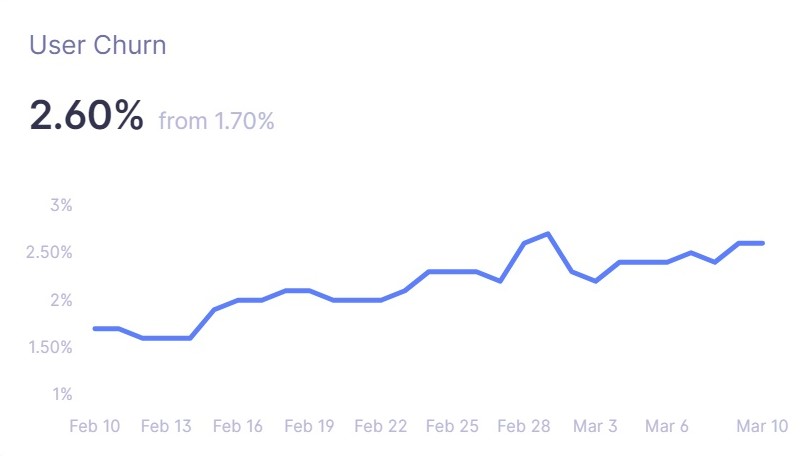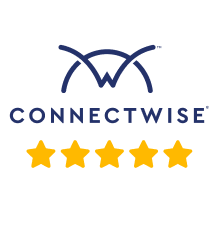You’ve got a plan to expand your business and take it to a new level. You’ve set clear goals and a timeframe, and you’ve got the drive to achieve growth. But for any of it to happen, your business has to have a solid foundation.
If you can’t retain your existing customer base, it doesn’t matter how quickly you’re gaining new customers. You’ll always be on shaky grounds, a few bad months away from disaster.

Still don’t know what you’re doing? ⚠️
You can stop leaking customers today – you just need to make it a priority.
What is customer retention? 🎭
Churn is when customers stop doing business with you — for example, when they cancel (or decide not to renew) their subscriptions. You need to do all you can to avoid high churn rates.
Customer retention is the opposite side of the coin: it means avoiding churn. If you can keep your customers from taking their business elsewhere, your customer retention rate will remain high.
If you want to improve your customer retention (and you definitely do), you need to reduce churn. Easy as pie!
Now let’s talk about what that actually means and how you can measure it.
Calculating customer retention rate
Your Customer Retention Rate (CRR) is a good measure of the health of your business. It shows the percentage of customers who remain loyal within a given time period.
There are a few different ways to calculate it. We like to keep it simple, using Zendesk’s formula:
[(E-N)/S] x 100 = CRR
S – The number of existing customers at the start of the time period (S)
E – The number of total customers at the end of the time period (E)
N – The number of new customers added within the time period (N)
Example:
You start the month with 100 customers, and you end it with 130 customers. During the month, you acquired 40 new customers.
((130-40)/100) x 100 = 90% Customer Retention Rate
Your churn rate is the inverse of that: Churn Rate = 100-CRR.
So, if your CRR is 90%, your churn rate is 10%. Now you have to figure out if that’s good enough.
Calculating retention rate benchmarks
Calculating retention rates don’t mean much unless you know what’s expected in your field.
For a rough estimate, you can use Profitwell’s research on retention rates per industry:
🛒 Retail: 63%
💸 Banking: 75%
🤳 Telecom: 78%
💻 IT Services: 81%
🤝🏼 Insurance: 83%
🧙♂️ Professional services: 84%
🍿 Media: 84%
There are some niche-specific reasons why customers might find it extra easy (or unusually difficult) to switch to a new product or service. That’s why it’s helpful to benchmark yourself against your industry to see where you stand.
Why is keeping a high CRR important?
As we said, you can’t achieve stability when your churn rate is high. Any small change can keep new customers from coming in — and that will leave you high and dry. Eventually, you’re going to start bleeding money as well as customers.
Acquiring new customers is generally expensive and requires tons of resources. The cost of attracting new users also keeps growing year by year.
If you can keep a customer who seriously considered canceling, that’s the same thing as acquiring a new one. And you can do it at a fraction of the cost.
How do you track and analyze churn metrics? 🤓
To develop a winning customer retention strategy, you have to see clearly what works and what doesn’t. You can’t fix what you don’t understand!
At Simplesat, we use Baremetrics to track customer churn and other finance metrics.

Here is a graph showing our customer churn over the span of a month. As you can see, our churn rate grew slightly from mid-February to mid-March. It’s nothing to panic over, but we’re keeping a close eye on the change.
Our goal is to keep our churn rate below 2%, which means a customer retention rate of 98% or more.
We also track churn over time on our scorecard.
Each month, we set aside time to review our metrics. We consider how we did and whether we’re reaching our goals. This helps us keep certain KPIs, such as customer retention, top of mind.
Strategies for customer retention 🏆
If you’re unsatisfied with your CRR, here’s what you need to change.
1. Implement a customer feedback loop
It’s difficult to know where to start if you don’t know how your customers feel.
If only there were a system that made it easy to survey customers and manage feedback all in place… 🤔
… It’s Simplesat, baby!!! 👯

With Simplesat, you can use different metrics and types of surveys for different situations. Most importantly:
- Add CSAT surveys to solved tickets in your help desk. This lets you stay on top of issues and resolve them in real time. The surveys also give you insight into tactical improvements you can make later down the line.
- Send quarterly NPS email surveys to all customers. Recurring Net Promoter Score surveys capture your customer base’s general sentiment – the focus here isn’t on problems, but on getting a complete picture of the customer experience.
Combined, CSAT and NPS will give you a lot of the information you need to make improvements to improve retention.
2. Find and track the red flag metrics
You can’t prevent churn entirely. But when a customer does cancel, you need to use it as a learning opportunity.
Use surveys to find out why the customer decided to leave. Then try to connect some of those reasons with KPIs that you can track.
For example, a common reason for Simplesat cancelations is that users aren’t getting enough feedback to justify the value of their prescription.
To keep things from getting that bad, our NPS survey includes a question asking if users are happy with the amount of feedback they receive. This lets us identify red flags early on. 🚩
3. Consistently communicate the value you deliver
Another common reason behind cancellations is neglected communication from your side.
Some customers stop seeing the point of paying for your service simply because you’re staying out of sight and out of mind. They start to forget why they chose you in the first place. They may assume you’re stagnating, or get tempted away by a more aggressive competitor.
Make sure customers are aware of new features and enhancements you’ve made. At Simplesat, we have a new feature workflow, defined to make sure every new feature gets shared!
You should also make sure customers understand what you’re doing for them day-in and day-out. As IT Business Growth expert Richard Tubb likes to say: “Let your client see the pain, but not feel the pain.”
If your business involves behind-the-scenes work such as IT security monitoring, show customers the potential crises you’ve averted for them. 🦸
4. Take customer support seriously
From the Zendesk study, Customer Service and Business Results:
“66% of B2B and 52% of B2C customers stopped buying after a bad customer service interaction.”
Other relevant statistic results from the study:
"72% blamed their bad customer service interaction on having to explain their problem to multiple people"
"95% share bad experiences and 87% share good experiences with others"
"45% share bad customer service experiences and 30% share good customer service experiences via social media"
Customer service shouldn’t be a department, it should be fully integrated with your product and service.
Aim to solve customer questions or issues in the first interaction.
Basically, you want to avoid the ‘please stay on the line, I have to ask my manager’ effect.
Escalating issues to a higher support tier may seem efficient for you internally — but it prolongs your customer’s waiting time. It makes them feel unappreciated, all while their issue remains unresolved.
It’s 2022, the era of Zendesk, Intercom, and other online support tools. There’s no excuse to keep people waiting. You can and should deliver near-instantaneous support around the clock.
If you don’t think this is important, don’t worry… your competitor does 🤷♂️. By the time you get around to your customer, they might have already found a solution elsewhere.
5. Focus on a truly remarkable product or service
You can do plenty to keep your customers engaged by paying attention to them:
- Use CSAT and NPS surveys to gain a full picture of how your customers are feeling about your service.
- When a customer decides to leave, make it easy for them to tell you why they canceled.
- Make sure every customer understands what you’re doing for them. In case of any problems, provide instant help.
But none of that’s enough if your product or service doesn’t measure up.
Customers are rational decision-makers (well, mostly 😉). You have to have an attribute that differentiates you from the competition – cost, quality, reliability, or whatever else. If you can’t keep providing that consistently, they’ll find someone who can.
We know that’s all easier said than done. But providing exceptional products and services is only a question of determination.
One of our favorite sources of inspiration is Purple Cow by Seth Godin, a book about creating remarkable products – purple cows! 🤠
Whether you develop a new insurance policy, record a hit record, or write a best-selling, groundbreaking book, the money, prestige, power, and satisfaction that follow are extraordinary. In exchange for taking the risk – the risk of failure or ridicule or unfulfilled dreams – the creator of the Purple Cow gets a huge upside when she gets it right.
We’re in your corner 👍
If you’ve already got a robust customer retention strategy, we hope Simplesat can help you keep a finger on the pulse of your user base. With enough information and prompt customer support, you can head off any issues before people even think of leaving.
But if you’re feeling a bit at sea — hey, we’ve been there. We found HubSpot’s Churn Analysis Template to be a great option for beginners and anyone who wants to go back to the basics.
Spend some time looking into the best analytics tools for your niche. Then get to work finding out what disappointed customers are thinking. Only then can you decide how best to change their mind and keep them loyal.













